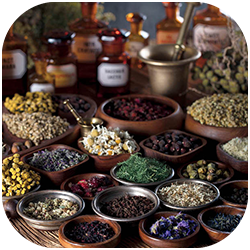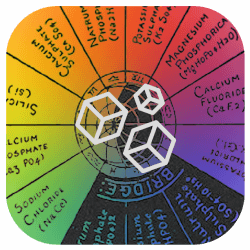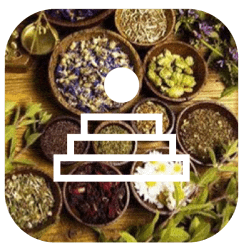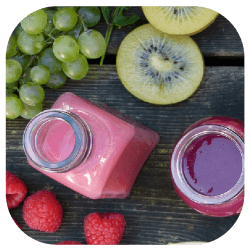Psychic Number 1 (SUN) Pitta
- Number 1 people generally have a dominant bilious pitta temperament, also pay close attention to mixed temperament.
- 1’s have a strong build, they always have problems with their circulatory system and are advised to to use foods that purify the blood.
- Use sesame or almond oil to massage the body and maintain good blood circulation. Exercises that enhance their circulation is useful to them.
- They should avoid foods that increase their acidity and need to maintain an alkaline blood chemistry.
- Its recommended that they should avoid oily foods, fish, meat, wine, yogurt and whey; they also should not eat late hours in the evening.
- powdered rubies aids in their weak period while powdered pearls keeps their body chemistry alkaline.
- Fasting all day on sunday and eating salt free fasting foods, using lemon water to fast for 3 days aids in the purification of the blood.
List of Alkaline and acidic forming foods
Acidic
Mandarin orange,pineapple, date, fig, plum
String bean, anchovy, tomato, mushroom, eggplant etc
Alkaline
Grapes, cherry, squash, mango, litchi fruit etc
carrot, cucumber, celery, spinach, pumpkin, sweet potato
Pittas should focus on eating more of the Sweet, Astringent, and Bitter tastes, ie: leafy greens, lentils, dried beans, pomegranates, potatoes, fish and shellfish, dairy, nuts and seeds, root vegetables, coconut, lime, cilantro, peppermint, dill, fennel, and aloe vera are good choices for you.
Pittas should focus on detoxing and cleansing of the blood and liver
Pitta season is from late spring into early fall. Elements of Fire & Earth
Qualities to Reduce: hot, light, dry
Tastes to Maximize: sweet, bitter, astringent
The Sweet Taste .:. earth + water …is heavy, moist, and cool. This increases Kapha and decreases Vata and Pitta. Examples are nuts, grains, oils, meats, and most dairy.
The Bitter Taste .:. air + ether …is light, dry, and cool. This increases Vata and decreases Pitta and Kapha. Examples are leafy greens and herbs such as goldenseal and turmeric.
The Astringent Taste .:. earth + air …is dry and cool. This increases Vata and decreases Pitta and Kapha. Examples are most beans, cranberries, and pomegranates.
Tastes to Minimize: salty, pungent, sour
The Salty Taste .:. fire + water …is heavy, moist, and hot. This increases Pitta and Kapha and decreases Vata. Examples are sea salt, sea vegetables, and seafood.
The Pungent Taste .:. fire + air …is light, dry, and hot. This increases Pitta and Vata and decreases Kapha. Examples are chili peppers, ginger, and black pepper.
The Sour Taste .:. fire + earth …is heavy, moist, and hot. This increases Pitta and Kapha and decreases Vata. Examples are pickles and fermented foods such as yogurt.
Diet for pitta in Spring
Pitta types are typically aggravated by hot and fiery foods. Although spring can still be cool, it’s starting to heat up. So, spring is a good time for pitta types to start introducing cooler foods. Try a nourishing salad with seasonal vegetables but dressed with aromatic spices such as cumin, coriander and fennel just to keep the spring chill at bay.
Other good eating practices include:
- Introduce cooling, refreshing foods into your daily diet. Take some Pukka Herbs Aloe Vera just before each meal
- Pittas favor foods that are sweet, bitter or astringent and, therefore, more cooling
- Reduce foods that are spicy, salty or sour and avoid pungent foods – all of which will encourage heat
- Avoid stimulants, dairy and highly fatty or processed foods (these take more energy to break down and pressurize the digestive system)
Diet for pitta in summer
Foods with a sweet, bitter and drying taste are generally considered to be more cooling in their nature. Pitta constitutions are also the only dosha that can efficiently digest raw or cold foods, so foodstuffs such as salad are perfect for the fiery pitta during the warm summer months.
Avoid foods that generate heat such as spicy, salty and sour foods. Keeping yourself topped up with cooling liquids such as aloe vera juice, rose waters and cool herbal teas including herbs such as peppermint are perfect.
Diet for pitta in Fall
You can balance pitta’s intense, volcanic nature with the opposing qualities of calm and moderation. In particular, not skipping meals, and favoring ‘cooler’ foods, as well as spending time laughing every day and getting out and about amongst the natural world. Allow the brisk Autumnal winds to whip away any irritation and stress.
Those with a dominant pitta dosha will benefit from allowing time and space for the body and mind to find cool and calm. However, be cautious of adding in too many cooling foods; bear in mind that the climate is naturally cooler and that your body will need to start ‘storing’ nutrition for the Winter months ahead.
- Pitta favor foods that are sweet, bitter or astringent and, therefore, more cooling
- Reduce foods that are spicy, salty or sour and avoid pungent foods – all of which will encourage heat and only build on the heat accumulated during the summer months
- Avoid stimulants, dairy and highly fatty or processed foods (these take more energy to break down and pressurize the digestive system)
- Practice exercises that are cooling, regulating and balancing. For a pitta these can be Moon Salutations and shoulder stands
- Herbs to help calm the fire of pitta are those that are characteristically cooling, calming and anti-inflammatory.
- Remember that you want to help to body release excess heat without causing it to become too cold, so during the autumn months Pitta types can tolerate slightly warmer but anti-inflammatory herbs such as turmeric and fennel
Diet for pitta in Winter
You can balance pitta’s intense, volcanic nature with the opposing qualities of calm and moderation. In particular, not skipping meals, and favoring ‘cooler’ foods, however, be cautious of adding in too many cooling foods; bear in mind that the climate is naturally cooler and that your body will need to start ‘storing’ nutrition for the Winter months ahead.
- Usually, those with a pitta dosha should favor foods that are sweet, bitter or astringent and, therefore, more cooling. This is still relevant during the winter, but it’s important to reduce fridge-cold and raw foods during this time of year and stick to warm, cooked foods and drinks that will keep your inner fire burning. This is essential for maintaining a balanced metabolism.
- Reduce foods that are very hot and spicy such as chili and ginger, all of which will encourage accumulation of heat and extra pitta.
- Avoid stimulants, dairy and highly fatty or processed foods; these take more energy and heat to break down and can pressurize the digestive system.
- Herbs to help calm the fire of pitta are those that are characteristically cooling, calming and anti-inflammatory. In the winter months, care needs to be taken not to completely extinguish your inner fire, so it’s important to keep a little heat circulating.
- Remember, that you want to help the body release excess heat without causing it to become too cold.
Pitta Food List
Grains
It is best to eat these as a cooked grain or as an unyeasted bread. Small amounts of yeast breads are all right. Grains should make up a large portion of the diet.
Best:* barley, white basmati rice, millet, oats, white rice, wheat, whole wheat, quinoa
Small Amounts:* brown rice (only in acute pitta conditions, otherwise it can be used often)
Minimize:* buckwheat, corn flour
Dairy
It is best to use raw or organic and non-homogenized milk. Milk should be taken warm with a small amount of spice such as fresh ginger, cardamom, or fennel.
Best:* unsalted butter, cottage cheese, cream cheese, ghee, milk
Small Amounts:* hard non-salted cheeses
Minimize:* buttermilk, salted cheeses, sour cream, kefir, cultured milks, yogurt
Nuts and Seeds
These should be eaten lightly dry-roasted to assist digestion and be only very lightly salted, if at all. Nut butters, except for peanut, may also be eaten.
Best:* coconut, sunflower, pumpkin seeds
Small Amounts:* pinon nuts, sesame seeds
Minimize:* almonds, Brazil nuts, cashews, filberts, macadamia nuts, pecans, pistachio, peanuts, and any other nut not mentioned
Condiments
Condiments can be used to add one of the tastes to a meal or to balance out any heating or cooling qualities of a dish.
Best:* carob sweetened with the “Best” sweeteners noted
Small Amounts:* mayonnaise, sweet mustards
Minimize:* chocolate, salt, vinegar
Oils
Healthy oils are very important and should be used abundantly if the skin is dry. They alleviate dryness and are generally heavy and nourishing.
Best:* Ghee, olive oil, coconut
Small Amounts:* avocado, corn, non-GMO soy, sunflower
Minimize:* almond, flaxseed, mustard, peanut, safflower, sesame
Fruits
Sweet and ripe fruits are best. Avoid sour fruit.
Best:* apples, avocados, blackberries, blueberries, cantaloupe, coconut, cranberries, dates, dried fruit, figs, grapes, lemons, limes, nectarines, pineapple, prunes, raisins, raspberries, strawberries
Small Amounts:* apricots, bananas (very ripe only), cherries, grapefruit, oranges, pineapple
Minimize:* All sour fruits, such as sour oranges (mandarin), sour pineapple, sour plums, papaya, olives, tangerines, and all unripe fruit
Vegetables
Vegetables are best eaten fresh. You may eat large amounts. Eat them cooked in the winter or if digestion is weak. Eat them raw in the summer if your digestion is strong. Fresh green vegetable juices are very good. Those with arthritis should avoid all nightshades.
Best:* alfalfa sprouts, artichoke, asparagus, bean sprouts, bell peppers, bitter melon, broccoli, Brussels sprouts, cabbage, cauliflower, celery, cilantro, cress, cucumber, green peppers, kale, leafy greens, lettuce, mushrooms, onions (well cooked), peas, pumpkin, seaweed, squash, zucchini
Small Amounts:* avocado, beets, carrots, corn, eggplant, garlic (well cooked), parsley, potatoes, spinach, sweet potatoes, vineripened tomatoes
Minimize:* chilies, hot peppers, mustard greens, onion (raw), radishes, tomato paste, tomato
Meats
If you choose to eat meat, limit consumption to 2–3 times per week, and eat it at lunch.
Best:* chicken, egg whites, fresh water fish (trout), turkey
Small Amounts:* beef, duck, egg yolk, lamb, pork, sea fish, venison, any other red meat
Minimize:* none
Spices
When spicing, the overall spiciness is more important than individual spices. Even some “Minimize” spices can be used if balanced with other spices on the “Best” list. For pitta, food should be spiced mild to moderate and never very hot or bland.
Best:* cardamom, chamomile, cilantro, coconut, coriander, cumin, dill, fennel, lemon verbena, peppermint, saffron, spearmint, turmeric
Small Amounts:* basil, bay leaf, black pepper, caraway, cinnamon, fenugreek, garlic (cooked), ginger (fresh), rosemary
Minimize:* anise, asafoetida, calamus, Cayenne pepper, cloves, garlic (raw), ginger (dry), horseradish, hyssop, marjoram, mustard seeds, nutmeg, oregano, poppy seeds, sage, star anise, thyme
Legumes
Use legumes that have been soaked for as long as possible prior to cooking. Cook legumes with hing to aid digestion.
Best:* black lentils, chickpeas, mung beans, split peas, soybeans (soy products), tofu
Small Amounts:* aduki beans, kidney beans, navy beans, pinto beans
Minimize:* red and yellow lentils
Beverages
These are best taken at room temperature or warm and never cold.
Best:* Bitter and astringent herb teas such as alfalfa, chicory, dandelion, hibiscus, and strawberry leaf. Milk, wheat grass juice. Pitta tea.
Small Amounts:* Chai tea or black tea, fruit juice diluted with one-half water
Minimize:* alcohol, carbonated water, coffee, sweet fruit juices, spicy herb teas, soft drinks, tomato juice
Sweeteners
Overuse of any sweetener will eventually cause an imbalance.
Best:* maltose, maple syrup, rice syrup
Small Amounts:* dextrose, fructose, raw honey, table sugar
Minimize:* molasses, raw sugar Avoid Always avoid these foods: margarine, canola, GMO anything (ie: soy, corn, etc.), agave nectar, high fructose sweeteners, grapeseed oil, soda, CAFO Meats
|
PREFER
|
AVOID
|
|
FRUITS
apples (sweet)
apricots
avocado
bananas (ripe)
blackberries
blueberries
cantaloupe
cherries (sweet)
coconut
cranberries
dates
figs
gapefruit (red)
grapes
guavas
kiwi (sweet)
lemons (small amounts)
longan
lychees
mangoes (ripe)
melons
nectarines
oranges (sweet)
papaya (sweet)
pears
persimmons
pineapples (sweet)
plums
pomegranate
prunes
raisins (soaked)
rambutan
raspberries
strawberries
tangerines (sweet)
watermelon
|
FRUITS
apples (sour)
bananas (unripe)
cherries (sour)
grapefruit (yellow)
kiwi (sour)
limes
mandarins
mangoes (green)
oranges (sour)
papaya (sour)
peaches
pineapple (sour)
plums (sour)
rhubarb
soursop
tamarind
tangerines (sour)
|
|
VEGETABLES
alfalfa sprouts
artichokes
arugula
aspargus
bean sprouts
beets (cooked)
bell peppers
bitter melon
bok choy
broccoli
brussel sprouts
burdock root
cabbage
carrots (cooked)
cauliflower
celery
chard
cilantro
collard greens
corn
cucumber
dandelion greens
endive
fennel stalks
green beans
jerusalem artichokes
jicama
kale
kohlarbi
leeks
lettuce
mushrooms
mustard greens
okra
olives (black)
onions (sweet and cooked)
parsley
parsnips
peas
potatoes
pumpkin
purslane
radicchio
rutabaga
seaweed
sprouts
squash (all kinds)
sweet potatoes
taro root
watercress
wheatgrass
yams
zucchini
|
VEGETABLES
beets (raw)
carrots (raw)
chili peppers
daikon
eggplant
horseradish
mustard greens
olives (green)
onions (raw)
radishes
spinach
tomatoes
turnip greens
turnips
|
|
GAINS AND LEGUMES
adzuki beans
amaranth
barley
basmati rice
black beans
black eyed peas
chickpeas
couscous
durham flour
fava beans
kamut
kidney beans
lentils (black)
lima beans
millet
mung beans
mung dl
navy beans
oat bran
oats (cooked)
pinto beans
quinoa
rice cakes
sago
seitan
soybeans
spelt
split peas
tapioca
tempeh
wheat
wheat bran
white beans
white rice
whole wheat
wild rice
|
GAINS AND LEGUMES
brown rice
buckwheat
corn flour
dry oats
ganola
kidney beans
lentils (red, green and yellow)
tur dal
urad dal
|
|
DAIRY
butter (unsalted)
buttermilk
cheeses (unsalted)
cottage cheese
cream cheese
ice cream (during summer)
lassi
milk
paneer
skim milk
|
DAIRY
butter (salted)
cheeses (salted)
cultured milk
kefir
sour cream
yogurt
|
|
NUTS AND SEEDS
almonds (soaked annd peeled)
charoli nuts
chia seeds
flax seeds
poppy seeds
pumpkin seeds
sunflower seeds
|
NUTS AND SEEDS
brazil nuts
cashews
hazelnuts
macadamia
peanuts
pecans
pine nuts
pistachio
psyllium seeds
sesame seeds
|
|
OILS
avocado oil
coconut oil
corn oil
flax seed oil
ghee
olive oil
primrose
pumpkin seed oil
sunflower oil
walnut oil
|
OILS
almond oil
margarine
mustard oil
peanut oil
safflower oil
sesame oil
|
|
BEVERAGES
almond milk
aloe vera juice
anise tea
apple juice (diluted with water)
apricot juice (diluted with water)
basil tea
borage tea
burdock tea
cardamom tea
chai
chamomile tea
cherry stem tea
chicory tea
chrysanthemum tea
cinnamon tea
clover tea
comfrey tea
corn silk tea
cranberry juice (diluted with water)
cranberry tea
dandelion tea
elderflower tea
fennel tea
fresh ginger tea
hibiscus tea
honeysuckle tea
hops tea
jasmine tea
lavender tea
lemon balm tea
lemongrass tea
licorice tea
marshmallow tea
mint tea
nettle tea
peppermint tea
pomegranate juice (diluted with water)
raspberry juice (diluted with water)
raspberry tea
rice milk
soy milk
strawberry juice (diluted with water)
strawberry leaf tea
turmeric milk
turmeric tea
verbena tea
violet tea
wheatgrass juice
wintergreen tea
|
BEVERAGES
ajwan tea
alcohol
anise tea
black tea
cashew milk
coffee
dry ginger tea
green tea
lemonade
lime juice
sage tea
smoothies
tamarind juice
thyme tea
tomato juice
undiluted fruit juices
|
|
SWEETENERS
barley malt syrup
dextrose
fructose
maltose
maple syrup
raw cane sugar
raw honey (uncooked)
rice syrup
stevia
|
SWEETENERS
agave syrup
jaggery
molasses
white sugar
|
|
SPICES
basil
bay leaf
black pepper (small amount)
caraway
cardamom
cilantro
cinnamon
coriander seeds
cumin
curry leaves
dill
fennel
fenugreek
ginger (fresh)
lemongrass
mint
mint
neem leaves
oregano
parsley
peppermint
rose water
rosemary
saffron
spearmint
turmeric
vanilla
|
SPICES
ajwan
allspice
anise
asafoetida
cayenne
cloves
garlic
ginger (dry)
marjoram
mustard seeds
nutmeg
paprika
pippali (long pepper)
sage
salt
thyme
|






















